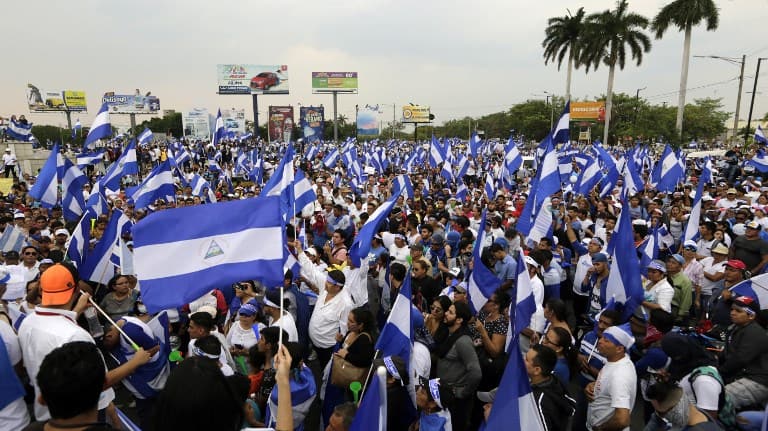One Nicaraguan guard pinned his hand to a table with his knee while another ripped out a nail with a pair of pliers. Opposition supporter Lenin Rojas, recently released from prison to house arrest, says he screamed in pain.
The 36-year-old says his cry was heard throughout the El Chipote prison in Nicaragua’s capital, Managua.
But his torturers weren’t finished.
“They started hitting me again. They left me almost unconscious, they put me back in that same position, and ripped out two more nails,” said the father of four, showing his mutilated fingers.
He was one of 235 prisoners freed last month as part of a deal brokered between the main opposition alliance and the government to restart stalled peace talks, a year after protests against President Daniel Ortega’s government broke out in Nicaragua.
Four months of brutal crackdown by authorities left 325 people dead and another 800 locked up.
“The beatings got ever more brutal to the point that I asked them to kill me, to put a bullet in me, rather than continuing to torture me.
“They were annoyed at not getting a reply to their questions… an inspector said they were going to throw all of us — the arrested demonstrators — into the crater of the Masaya volcano.”
That’s an active volcano 20 kilometers (12 miles) south of Managua. It emits huge amounts of sulphur dioxide.
– ‘Terrorism’ –
Rojas was arrested last July for having treated injured demonstrators and was sentenced to 18 years for “terrorism,” among a dozen alleged crimes.
“My only weapons (were) a flag, and a T-shirt with an opposition slogan,” Rojas said bitterly.
His testimony matches those of many other opposition supporters who suffered beatings, solitary confinement, threats, rape and other forms of mistreatment, according to a report compiled by the UN High Commission for Human Rights.
Like other released prisoners confined to house arrest, Rojas says he’s “not free.”
Armed pro-government groups regularly go to his house to intimidate him. He also claims to have suffered insomnia since his release from prison, as well as reacting aggressively when awakened.
He is haunted by the memory of the “constant cries of horror” let out by fellow prisoners.
“The only thing we could do was ask God to end this torture,” he said.
– ‘Hung by their feet’ –
Hundreds of demonstrators — men and women — found themselves imprisoned in the dark and dank underground cells of El Chipote.
It was the same prison used by the Anastasio Somoza dictatorship before the US-backed leader was toppled in 1979, when the former leftist guerrilla Ortega first assumed power.
The Independent Permanent Human Rights Commission regularly receives complaints about mistreatment suffered by imprisoned opposition supporters, says Julio Montenegro a legal consultant for the NGO.
“We know about torture cases, for example, where someone was hung by their feet while being hit in the stomach, or by the use of tear gas in the prisoners’ cells,” he told AFP.
Montenegro claims inmates were also beaten at the La Esperanza women’s prison in the Managua suburbs.
Elsewhere, male prisoners were punished for singing the national anthem, which has become a rallying cry for the opposition.
Despite peace talks that began at the end of February — though suspended for the last two weeks — there is no end in sight to Nicaragua’s political crisis.
The opposition accuses Ortega — and his wife Vice President Rosario Murillo — of rights abuses and authoritarian rule.
But the 73-year-old leader refuses to consider the opposition’s key demand: to step down and bring forward presidential elections slated for 2021.
This story was made possible thanks to The Tico Times 5% Club. If only 5 percent of our readers donated at least $5 a month, we’d have our operating costs covered and could focus on bringing you more original reporting from around Costa Rica. We work hard to keep our reporting independent and groundbreaking, but we can only do it with your help. Join The Tico Times 5% Club and help make stories like this one possible.






